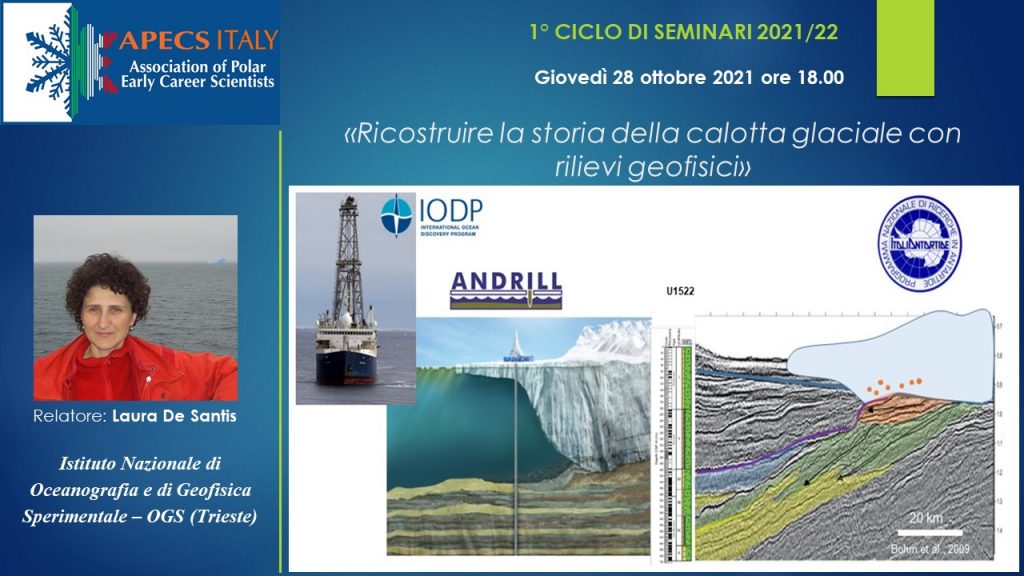online events
28th October 2021 h18.00
Reconstructing the history of the ice cap with geophysical surveys

Reflection seismic investigations make it possible to observe the geometry of the sedimentary sequences buried under the seabed and to map their distribution in space.
The integration of the seismic data with information from direct sediment sampling (surface coring and deep drilling) allows to know the age of the different sequences and to obtain information about the environment in which they are deposited and the surrounding climatic conditions.
This information is essential for understanding the stability of the Antarctic ice sheet and predicting its future evolution, considering the climate warming measured in the last few decades and that expected for the next few centuries. The processes that occurred during past deglaciations and the causes that most influenced the shrinkage of the cap in particularly hot periods of the past are particularly important, but still little known.
The seminar will briefly illustrate the principles of reflection seismics, the characteristics of the main sedimentary and acoustic glacial facies and examples in which the recognition of these facies has been used to reconstruct the modes of advance and retreat of the Antarctic ice sheet.
Istituto Nazionale di Oceanografia e di Geofisica Sperimentale – OGS (Trieste)

Laura De Santis
Italy
Current Position
RESEARCH ACTIVITIES
Istituto Nazionale di Oceanografia e di Geofisica Sperimentale – OGS (Trieste)
Laura De Santis uses geophysical data, acquired with reflection seismic surveys at sea and geological data from IODP (International Ocean Discovery Program) drillings, along the Antarctic continental margin. The study areas are in particular the Ross Sea, the edge of Wilkes Land and Prydz Bay. In 2022 she will acquire geophysical and oceanographic data on the edge of the Cook Glacier aboard the L. Bassi icebreaker.
The goal is to identify sedimentary morphologies and facies typically originating from glacial processes and linked to the circulation of bottom currents, and near the ice front, on the shelf, along the escarpment and on the continental rise, to reconstruct the evolution of the ice sheet. from the beginning of its formation.
Laura coordinated the 2018 IODP 374 expedition in the Ross Sea and the SCAR PAIS (Past Antarctic Ice Sheet dynamics) geosciences program from 2016 to 2020. She was also a member of the Scientific Commission for Antarctica of the PNRA from 2008 to 2015.